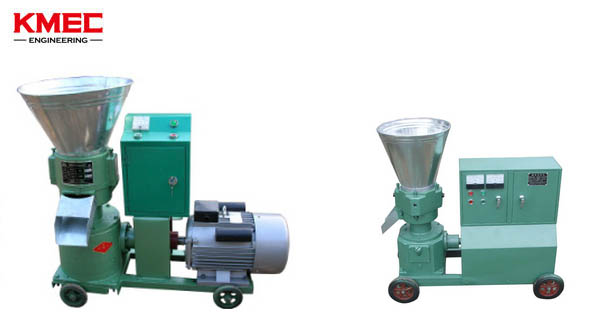Elements which affect the production capacity of wood pellet
Wood pellet is known as the market leader in the fuel pellet industry, nearly all forestry and agricultural wastes can be made into wood pellets by wood pellet mill, such as wood chips, sawdust, groundnut shells, stalks, coffee husks, paddy straw, sunflower stalk, cotton stalks, tobacco waste, mustard stalk, jute waste, bamboo dust, tea waste, wheat straw, palm husk, soybeans husk, rice husks, etc. The wood pellet produced by wood pellet mill can be used for industrial boilers and large power plants as well as home heating. Although all of the materials mentioned above can be made into wood pellet, some materials are more suitable than others due to potential issues like high ash contents, clinker formations and corrosion damage to pellet stoves or boilers. The performance of wood pellet mill changes depending on the material used.
In general, there are many factors which affect the production capacity of wood pellet mill. It mainly includes five elements:
1. Hardness of feedstock. The harder the feedstock, the more difficult they make pellets, the required compression pressure is much bigger and the wearing situation of wood pellet machinery is more serious. The lower the speed of pelleting, the smaller the ability of pelleting is.

2. Particle size of feedstock, the smaller the particle size of feedstock, the easier they make pellets. The smaller particle size of feedstock is easy to be compressed into the die holes, so the formation pellets has high density. So the particle size of feedstock in the pretreatment process should be smaller as far as possible. It is possible to select the coarse fiber feedstock from the feedstock, to avoid of the normal operation of wood pellet mill.
3. The moisture content of feedstock is the most important factor which affects the pelleting efficiency. For making pellets by sawdust, the moisture content of raw materials is an important target. The general moisture content is below 20%, but the figure is not absolute. And different materials have different moisture content requirements. For example, making pellets from the sawdust of the pine, fir, eucalyptus, feedstock’s moisture content requirement is between 13%-17%. The higher the moisture content, the more poor pelleting effects is. The lower the moisture content, the better effect of pelleting is. But too low moisture content give rise to over large power consumption. High density of feedstock increases the wearing condition. As for this issue, it depends on the requirements of factory which use the pellets. If there are no special requirements, the moisture content of the feedstock should be set in the middle.
4. Feedstock’s Viscosity. The bigger the viscosity of the feedstock, the easy it is easy to adherent. The feedstock in the wood pellet mill has high viscosity are easy to adhere to the inside walls of pellet making room. If these pellets are not cleaned in time, the working efficiency of sawdust pelleting is greatly affected. The more serious effect is to affect the normal operation of wood pellet mill. So, it is noticeable not to choose the feedstock with too big viscosity during choosing.
5. The matching degree of the die and feedstock is due to different feedstock texture, the different compression ratio of dies is needed to provide proper pressure to compress. As long as the mold have the best matching degree between the compression ratio and feedstock. It is ensure that the machine plays the best performance to ensure the pelleting process with the lowest cost.
In summary, the chief factors which affect the production ability of wood pellet mill depend on the physical property of raw materials. So the majority of users should select the proper wood pellet mill to produce during the pelleting process, which can not only improve the work efficiency of wood pellet mill, but also lengthen the service life of wood pellet mill and improve the pellet quality.
---------------------------------------------------------------------------------------------------------------------------------------------
Wood Barking Machine
Straw Pellet Machine for Sale and Pellet Plant Manufacturer
Performance of Wood Pellet Mill influenced by Conditioner Pad
Homemade pellet mill
Biomass fuel promote the development of biomass pellet mill
News
- Small Pellet Machine Manufacturer-Kingman
- Application of Wood Pellets and Use of Biomass Pellets
- From Fossil Fuel into Biomass Pellet Fuel
- Biomass Pellet Making Machines Market
- Applying of pellet stoves for home use
- Highland pellets to build $130 million facility in arkansas
- How to deal with the blocked hammer mill
- How to Make Wood Pellets with Sawdust
- The government policy promotes the development of biomass fuel
- Market analysis of biomass pellet fuel
- Strategic positioning of renewable energy
- Biomass energy has pass through the pre assessment
- The key point of deep processing of biomass pellet
- Harbin is promoting the development of biomass machinery
- The development of biomass formation technology I
- The development of biomass formation technology II
- Biomass energy industry is now going full tilt in 2015
- Rapid increasing demand of sawdust pellet on the market
- Pellet fuel market in EU
- Chinese Biomass Energy Conference held in Beijing
- Future market development of straw pellet mill
- Peanut Shell Pellet Mill Makes High Quality Pellets
- The utilization of straw is only 5%, biomass energy needs our attention!
- Corn straw pellet machine relieves the tight supply of fuel energy
- Reasons for loose or not forming of biomass pellet mill





